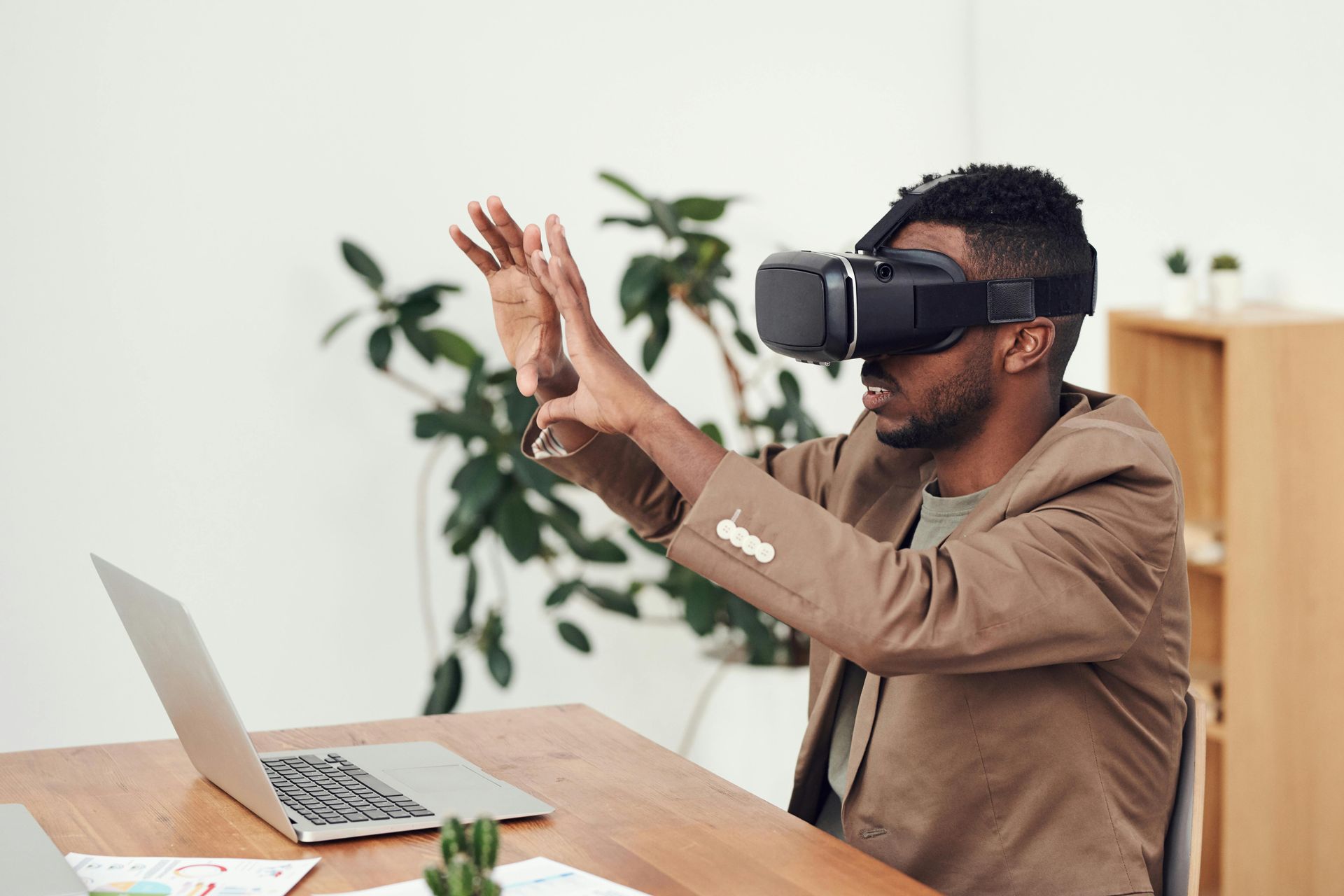If you’ve ever tried to composite a digital object into a real scene and make it look believable, you already know the hard part isn’t modeling or texturing—it’s lighting. Real-world illumination is messy: soft skylight and razor-sharp speculars, neon spill and tungsten warmth, reflections off windows you can’t see, all changing across space and time. Recovering that invisible “light field” from an image or video is one of the longest-running challenges in vision and graphics.
NVIDIA Research’s Spatial Intelligence Lab, together with the University of Toronto and the Vector Institute, has introduced LuxDiT—a generative lighting estimation model that predicts high-dynamic-range (HDR) environment maps from images or videos. Instead of regressing a few light parameters or stitching an LDR panorama, LuxDiT leans into modern generative modeling: it fine-tunes a Video Diffusion Transformer (DiT) to synthesize full HDR illumination conditioned on the visual evidence you can see (shadows, specular cues, interreflections). The punchline: realistic global lighting that preserves scene semantics and enables virtual object insertion that actually sits in the world. NVIDIA+1
Below, we unpack why lighting is so hard, what’s new about LuxDiT, how it’s trained, how it stacks up against recent approaches, and why it matters for AR, VFX, robotics, digital twins, and beyond.
Why Lighting Estimation Is Hard (and Why Generative Helps)
Lighting estimation needs to solve three tough problems at once:
- Indirect cues. The light sources themselves are often off-camera. You have to infer them from consequences—shading gradients, cast shadows, glints, color bleeding.
- Global context. Illumination is non-local: a softbox behind the camera still determines how a chrome ball in front will sing. A model must reason beyond local patches.
- HDR output. Real illumination spans orders of magnitude. A sRGB exposure can’t capture the headroom needed for faithful reflections and realistic highlights.
Traditional learning-based methods struggle because ground-truth HDR environment maps are rare and expensive to capture, leaving models prone to bias and overfitting. That’s why recent work pivoted to generative priors. GAN-based approaches such as StyleLight synthesize HDR panoramas from limited field-of-view images, while DiffusionLight reframes the task as “paint a chrome ball” with a powerful diffusion model, then inverts that probe into illumination. Each is clever, but each has trade-offs: GANs can misalign semantics; image diffusion can ignore temporal coherence; both rely heavily on limited HDR datasets. LuxDiT tackles these head-on with video diffusion, two-stage training, and LoRA adaptation that explicitly improves input-to-lighting semantic alignment. arXiv+3ECVA+3arXiv+3
LuxDiT in One Look
Goal: Given a single image or a video clip, generate a high-quality HDR environment map that matches the scene’s lighting, including convincing high-frequency angular details (think tight highlights and sun peeks), while staying semantically consistent with what the camera actually sees. NVIDIA+1
Core idea: Treat lighting estimation as a conditional generative task on HDR panoramas. Encode panoramas via a VAE, condition a Video DiT on the input visual stream, and decode an HDR environment map. To stabilize and guide learning, LuxDiT predicts two tone-mapped representations of the HDR panorama and a light directional map that nudges the model toward plausible source directions; a lightweight MLP fuses everything back into the final HDR output. NVIDIA
Why it matters: Instead of overfitting to small HDR datasets or regressing simplified light proxies, LuxDiT learns illumination structure itself—and does so at video scale for temporal consistency. The payoff is lighting that both looks right and acts right when you drop a virtual object into the shot. NVIDIA+1
The Training Strategy That Makes It Work
LuxDiT’s training recipe is as important as its architecture. The NVIDIA/U-Toronto team splits training into two complementary stages:
Stage I: Synthetic supervised training.
A large-scale,
diverse synthetic rendering dataset—randomized 3D scenes under many lighting conditions—gives LuxDiT unambiguous pairs of inputs and ground-truth HDR environment maps. This stage teaches the model to read
rendering cues (speculars, shadows) and to
reconstruct highlights accurately, something that’s notoriously fragile if you train on real images alone.
NVIDIA
Stage II: Semantic adaptation with LoRA.
Synthetic data doesn’t carry all the semantics of real scenes. So the team
fine-tunes with
LoRA (Low-Rank Adaptation) using perspective crops from
real HDR panoramas and panoramic videos—essentially “grounding” the generator in reality while preserving the highlight fidelity learned in Stage I. Crucially, they expose a
LoRA scale: at 0.0, you get the highlight-faithful output of Stage I; at 1.0, you get the
semantically aligned prediction that better matches the input scene’s look and feel. Skip the synthetic stage, and the model
fails to reconstruct strong highlights and produces less realistic environments.
NVIDIA
This dial-a-tradeoff is practical: different tasks (chrome-accurate reflections vs. perfectly matched backgrounds) want different balances. LoRA provides a clean control.
Why Video Diffusion Changes the Game
Lighting in the real world evolves: clouds drift, camera parallax reveals new light bounces, a door opens off-frame. A frame-by-frame estimator can jitter or drift. LuxDiT leverages a Video Diffusion Transformer so it can:
- Leverage temporal cues. Moving reflections and shadow edges provide extra constraints to localize sources.
- Maintain coherence. The same softbox shouldn’t jump around across frames; a video prior makes that consistency natural.
- Adapt to change. When illumination does change, conditioning across a short clip helps the model separate true lighting changes from camera noise.
On video benchmarks, the LuxDiT team reports improved stability and realism versus image-only methods, and even versus an image-mode of their own system. The project page highlights side-by-side comparisons on datasets such as Poly Haven Video and WEB360, showcasing temporally consistent panoramas and more credible virtual insertions. NVIDIA
What the Model Outputs and How It’s Evaluated
LuxDiT outputs an HDR 360° panorama (environment map). To visually judge realism, the authors render three spheres with different BRDFs (diffuse/rough/glossy) under the predicted illumination—an industry-standard quick-look to check highlight sharpness, color cast, and global contrast. They also present virtual object insertion results to show how well a synthetic object “sits” in the scene alongside ground-truth or reference panoramas where available. Across Laval Indoor/Outdoor and Poly Haven scenes and on video datasets, LuxDiT delivers accurate lighting with realistic angular high-frequency detail, outperforming recent state-of-the-art approaches both quantitatively and qualitatively, according to the paper and project page. arXiv+1
For context, Laval datasets are widely used HDR panorama benchmarks; they’ve underpinned multiple lighting papers and help span diverse indoor and outdoor conditions. Poly Haven supplies curated, calibrated HDRIs for rendering and evaluation. These resources make it possible to ground claims about HDR fidelity and generalization beyond lab imagery. LVSN+1
How LuxDiT Compares to Recent Methods
StyleLight (ECCV 2022):
Uses a dual-StyleGAN to generate indoor HDR panoramas from limited FOV images; clever LDR↔HDR coupling but less suited for video consistency and can drift semantically for out-of-distribution inputs. LuxDiT’s DiT and LoRA adaptation directly address semantic alignment and temporal coherence.
ECVA+1
DiffusionLight (2023/2024):
Frames lighting estimation as painting a
chrome ball using an off-the-shelf diffusion model (and “Turbo” variants for speed), then inverts to a light probe. It’s appealing for in-the-wild images and needs no massive HDR dataset; however, the step from chrome-ball imagery to a full panorama can be ill-posed, and temporal consistency is not a first-class citizen. LuxDiT natively models
HDR panoramas and introduces
video conditioning, making it better suited for production sequences.
arXiv+2DiffusionLight+2
EverLight (ICCV 2023):
Targets editable indoor-outdoor HDR lighting from single images with an emphasis on controllability. LuxDiT’s contribution is not editability per se, but
generation fidelity and
video-scale stability via DiT + two-stage training; the approaches are complementary in spirit.
CVF Open Access
The key differentiators for LuxDiT are video diffusion, synthetic-to-real training with LoRA, and an architecture that predicts multiple tone-mapped views plus a directional map, fused back into HDR—choices that explicitly attack the main pain points practitioners face today. NVIDIA
Where This Matters in the Real World
AR try-ons and product viz.
Believable reflections sell realism. With better HDR guesses, metallic, glossy, or translucent products look like they’re truly in your space—no more “floaty” composites.
VFX set extensions and digital props.
On set, you rarely have a clean 360° HDR capture for every shot. LuxDiT offers a way to recover illumination later, saving expensive reshoots and making quick iterations safer.
Robotics and embodied AI.
Illumination affects perception and navigation (glare, shadows, sensor saturation). Predicting HDR maps can improve domain adaptation and planning robustness.
Virtual production and digital twins.
Lighting realism is a bottleneck for immersive twins and LED volume production. A video-aware estimator that respects semantics supports interactive relighting and layout.
Photogrammetry and NeRF/Gaussian splats.
When you reconstruct geometry from casual video, a plausible HDR estimate helps you normalize, relight, or combine assets shot under different conditions.
Telepresence and creative tools.
From FaceTime-style AR inserts to creator workflows in 3D suites, “good enough HDR in seconds” unlocks workflows that used to require specialist rigs or painful manual tweaks.
Notes for Practitioners: What’s Actionable Right Now
Expect better high-frequency detail.
The synthetic stage teaches LuxDiT to respect sharp highlights—essential if you care about crisp reflections on chrome, glass, or car paint. The LoRA adaptation then lines those highlights up with the input’s semantics instead of washing them out.
NVIDIA
Plan for video when you can.
Even if your end deliverable is stills, feeding a short clip stabilizes estimates, reduces flicker, and often improves single-frame realism. That’s the strength of a Video DiT prior.
Use the LoRA “semantic dial.”
You don’t always want maximum semantic mimicry—sometimes you want the physically faithful highlight structure. The reported LoRA scale control provides a pragmatic knob to balance both.
NVIDIA
Anticipate compute.
Diffusion transformers are not featherweight. Expect higher compute than classical LFOV-to-panorama regressors, but also expect
materially better HDRs for demanding scenes.
Integrate with your renderer.
A clean HDRI slots into any modern DCC or game engine. For graded plates, consider camera response and tone-mapping; LuxDiT’s dual tone-mapped branches acknowledge that tone/hue cues in LDR guide HDR inference.
NVIDIA
Watch for code and models.
The team lists “Code (Coming Soon)” on the project page; until then, track the arXiv for revisions, and expect early community ports once details stabilize.
NVIDIA
Limitations and Open Questions
Dynamic, non-Lambertian complexity.
LuxDiT handles high-frequency details well, but scenes with
moving emitters, screens, or flickering neon remain tough. How robust is the video prior when light itself changes quickly?
Camera response and exposure.
Accurate HDR recovery depends on knowing or estimating camera response curves and exposure metadata. The model’s dual tone-mapped outputs help, but exposure extremes (blown windows, deep shadows) still challenge any estimator.
Generalization to rare spectra.
Sodium vapor, stage LEDs, or mixed CRI lighting push spectrum-dependent color shifts that aren’t perfectly represented in RGB-only supervision.
Real-time constraints.
Diffusion models are improving quickly, but interactive AR requires
latency-budgeted pipelines. A “Turbo” analogue, as seen in DiffusionLight follow-ups, could arrive later, or practitioners might combine
clip-level estimation with
per-frame refinement.
DiffusionLight
Dataset bias and long-tail conditions.
Even with a large synthetic corpus and LoRA on real HDRs, distribution gaps persist—e.g., underwater, harsh volumetrics, or extreme weather. As public HDR video sets grow, this should improve.
How LuxDiT Fits the Evolution of Lighting Estimation
The field has marched from parametric skylight fits and lamps-as-Gaussians toward data-driven HDR reconstructions. We’ve seen real-time AR heuristics for narrow FOV, GAN panorama synthesis that “imagines” unseen light, and diffusion-based chrome-ball probes that cleverly side-step HDR scarcity. LuxDiT blends the best of these trends and pushes them into the video domain with an explicit two-stage data strategy that addresses both physical fidelity and semantic alignment. The result is a system that does the thing artists and engineers actually want: faithful highlights that match the scene you shot—frame after frame. CVF Open Access+2ECVA+2
If You’re New to HDR Environment Maps
An environment map is a full 360° capture of incident illumination—traditionally used to light CG scenes. The “HDR” part matters: specular reflections, caustics, and metallic realism rely on intensity headroom that standard LDR images lack. The gold standard is an on-set HDRI shot with a mirrored sphere or bracketed panoramas. LuxDiT aims to give you something close, from the footage you already have. That’s transformational when you don’t control the set—or when the shot was captured long before someone asked for a photoreal insert. For a sense of why HDR panoramas are the core currency of relighting and reflections, see representative HDR datasets and prior map-estimation works used in research and industry. LVSN+1
The Paper, People, and Where to Learn More
- Paper: LuxDiT: Lighting Estimation with Video Diffusion Transformer, by Ruofan Liang, Kai He, Zan Gojcic, Igor Gilitschenski, Sanja Fidler, Nandita Vijaykumar, and Zian Wang (NVIDIA, University of Toronto, Vector Institute). The arXiv page provides the abstract, author list, and BibTeX. arXiv
- Project page: NVIDIA Spatial Intelligence Lab’s LuxDiT site, with method overview, training strategy, image/video results, comparisons, and virtual object insertion demos. “Code (Coming Soon)” is noted there. NVIDIA
- Related reading: StyleLight (HDR panorama generation from LFOV) and DiffusionLight (chrome-ball diffusion) for context on the baseline landscape LuxDiT advances. DiffusionLight+3arXiv+3ECVA+3
Takeaways for Teams Building Real-World Pipelines
- Use video when possible. Even a brief clip can unlock temporal cues that clean up jitter and make illumination more trustworthy.
- Balance physics and semantics. A two-stage strategy—first learn highlight-true lighting from synthetic scenes, then adapt to real-world semantics—offers the best of both worlds.
- Instrument your composites. Don’t eyeball it; render three-sphere checks and run perceptual metrics against any ground-truth HDRs you have to catch failures early.
- Design for the pipeline you have. Expect diffusion-class inference costs; amortize by estimating per shot or per scene, then applying lightweight refinements per frame.
- Stay modular. LuxDiT focuses on lighting; pair it with geometry/IBL-aware NeRFs or Gaussian splats to separate lighting from appearance when reconstructing assets.
The Bottom Line
Lighting estimation is finally catching up to how artists and robots actually see the world: as a global, dynamic, high-dynamic-range signal woven through indirect cues. LuxDiT is a meaningful step forward—a video-native, generative system that learns to reconstruct HDR environment maps from the visual breadcrumbs in your footage, then adapts them to the semantics of your scene. It’s not a toy demo; it’s a pragmatic recipe that acknowledges data scarcity, fights for highlight fidelity, and respects the reality that production happens in sequences, not single frames. If you care about making digital things feel real in real places, LuxDiT is the kind of research that changes your pipeline.
For details, results, and updates, read the paper on arXiv and explore the project page at NVIDIA Research. arXiv+1
Sources: NVIDIA Spatial Intelligence Lab project page; arXiv paper; representative prior art including StyleLight, DiffusionLight, and EverLight; and common HDR panorama datasets such as Laval and Poly Haven cited in related literature.
ScienceDirect+8NVIDIA+8arXiv+8











